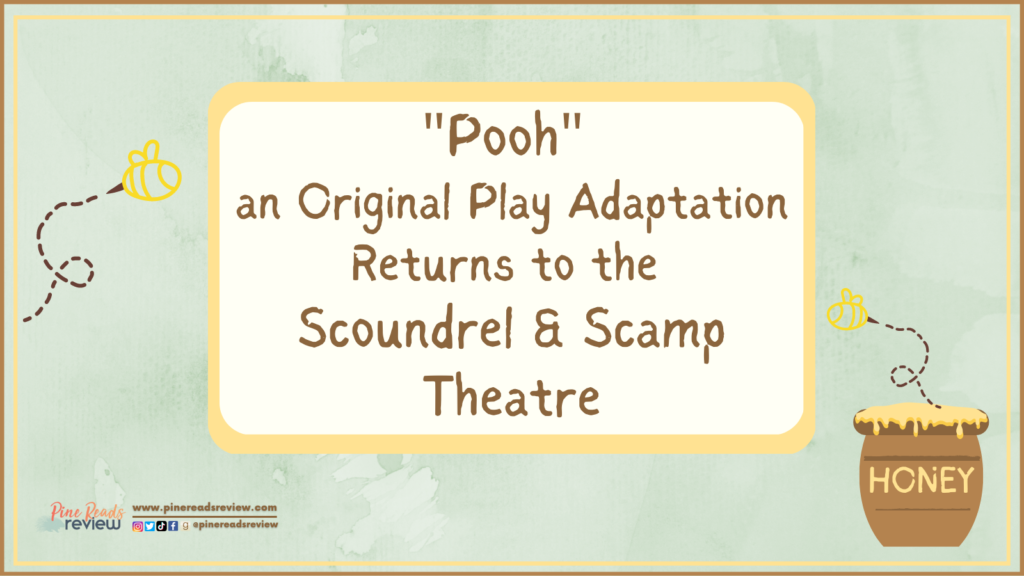
Last fall, I had the absolute pleasure of seeing Pooh, written by Betsy Labiner and Raulie Martinez and directed by Dawn McMillan, at The Scoundrel & Scamp Theatre here in Tucson. I had seen promos about this original adaptation of A. A. Milne’s famous stories via social media, and the literary stars aligned when S&S reached out to our team and invited us to see the show. The Scoundrel & Scamp Theatre is located just off 4th Avenue in the Historic Y here in Tucson. When patrons walk in, they are immersed in the quirky and lively atmosphere of the theatre; there are all kinds of baubles and decor lining the walls, as well as nooks and crannies for guests to explore. The theatre itself is just so whimsical and inviting. Once the show starts, it is instantly clear that Pooh is not a cookie-cutter adaptation of A. A. Milne’s work. This play focuses on the relationship between two kids, Chris and Robin, as the brothers reminisce on adventures in the Hundred Acre Wood. In addition to the warm fuzzies that Pooh Bear and his friends bring, there’s a fresh and heartwarming emphasis on family and growing up at the center of Pooh.
Now, I couldn’t possibly talk about Pooh without also mentioning the amazing technical design of the show. The set pieces are beautifully painted, bringing the familiar world of the Hundred Acre Wood to life with vibrant colors and textures. Lorie Heald, the Prop and Scenic Designer, truly created a remarkable world for patrons to step into. The costume design does a wonderful job of identifying the beloved characters while maintaining a well-loved and nostalgic look. One of my favorite parts of Gretchen Wirges’ design was the various patchwork quilt elements for each character. To name a few examples, Pooh Bear has a quilted scarf, Rabbit has patchwork ears, and Kanga has her apron with pink swatches of fabric. The lighting and puppet design, by Raulie Martinez and Lisa Sturtz respectively, also add so much personality to the show.
In addition to seeing the show last fall, I also had the opportunity to chat with playwright Betsy Labiner and director Dawn McMillan about their process of adapting and creating Pooh. As a theatre lover and fan of Winnie the Pooh, I was eager to hear how Labiner and McMillan approached this project. Here’s what they shared:
Betsy Labiner: I first remember reading Winnie-the-Pooh at a very young age, and absolutely loving the stories and the simple yet charming illustrations. I particularly liked Piglet – I think I appreciated the struggles of being small – while my sister was more of an Eeyore fan. When Raulie approached me to partner in adapting these stories, I went back and reread A. A. Milne’s book for the first time as an adult, and I was drawn in by how timelessly relevant the stories are. They approach difficulties and anxieties with whimsy, imagination, and heart, and the characters create a strong community through friendship and mutual support. I think stories foregrounding these types of loving relationships will always resonate, and that we as readers and audiences find them even more comforting when life feels stressful and uncertain. The Hundred Acre Wood is a beautiful, kind escape for all of us!
Dawn McMillan: I remember reading Winnie the Pooh books as a young person, and feeling like the characters were my friends. When I had my own children, I just had to share Pooh with them. Pooh and friends were so meaningful to my oldest child, they got a tattoo of Pooh and Piglet holding hands. When Raulie Martinez (one of the playwrights) asked me to direct this play, I literally squealed in delight. I knew Scoundrel and Scamp would set me up with a great team to work with in order to do justice to the work.
BL: I think one of the biggest challenges was updating the century-old language and making it sound natural for a modern audience. The language still reads naturally on the page, but when you speak it aloud, it suddenly feels clunky and old-fashioned, and some of the words simply aren’t used the same way now! I put a lot of effort into making the dialogue feel current and relaxed, without losing the meaning or the humor of the original text. Another challenge was completely rewriting the scene in which Winnie-the-Pooh gets stuck in Rabbit’s door; the original story has Christopher Robin tell Pooh he has to “get thin,” and in order to do that, Pooh is instructed to not eat for a week. Honestly, that was horrifying to read as an adult, and I knew there was no way I was repeating that idea, especially to children! In one of our very first meetings, I told Raulie in absolute terms that the original language and message was unacceptable, and that I wanted to rewrite it in a body-positive, non-shaming way. He gave full endorsement of that, and so I wrote the scene to focus more on rabbits and bears simply being different sizes, and that Pooh is stuck more because of honey in his fur than anything else. Buttering him up to slide out also allowed me to create a solution that demonstrates the importance of asking for help, communal care, and the ways that sharing in a solution means no one person is burdened. I am very proud of the final scene I created!
DM: Of course, working with beloved, well-known characters is a big responsibility. People already have their own ideas about these characters. We needed to find a way to honor that, while still having the freedom to create something new. My main goal as director was to create an experience where the adults in the room would be transported back to the original delight of encountering these friends. But, I also wanted to awaken a love of Pooh for kids seeing these stories for the first time. My hope was that families would leave the theater and read together.
BL: Making the solo character of Christopher Robin into siblings Chris and Robin was a decision to continue foregrounding relationships, making sure that we had a strong emotional heart to the play. We knew that we wanted to have an overarching “real world” narrative that framed and connected the Hundred Acre Wood scenes, and provide a story that children in the audience might be able to connect to in addition to the adventures with Pooh. Pooh’s stories are wonderful and have many vital lessons, but they’re very episodic, so we wanted to pair them with a storyline that gave a sense of continuity, growth, and impact. We can draw a direct line between what the siblings experience in the stories with how they learn and evolve in their ordinary lives, giving the audience multiple touchstones. The siblings’ relationship also shows that changes impact all of us, whether it’s a move to a new town or realizing you don’t have to protect your little brother all the time. Focusing on sibling relationships had the benefit of making our two humans more equal, even with age difference, rather than the dynamic of a parent and child.
DM: Ultimately, this play became a moment of fun and charm so needed in a harried and busy world. I am deeply proud of the playwrights, actors, and designers for bringing their gifts to what turned out to be a warm and enjoyable development process. The fun and laughter we all shared, shows in the work the audience sees. One of the reasons Pooh is loved is because these stories are not terribly serious, everyone belongs, and everything turns out well in the end. So much of life is serious. Spending time in the 100 Acre Wood lightens our hearts, and who doesn’t need a lighter heart? I invite our Tucson community to come see the play in May and enjoy the sweetness of Pooh and friends.
Dawn McMillan put it so perfectly: Pooh is a fun and charming new take on the adventures within the Hundred Acre Wood. Seeing the show is an experience for the whole family, and I guarantee you’ll love it, whether you’re 5 or 50! Pooh will be back at the Scoundrel and Scamp from May 12th to 21st. For more information on performance dates and ticket pricing, visit S&S’s website here!
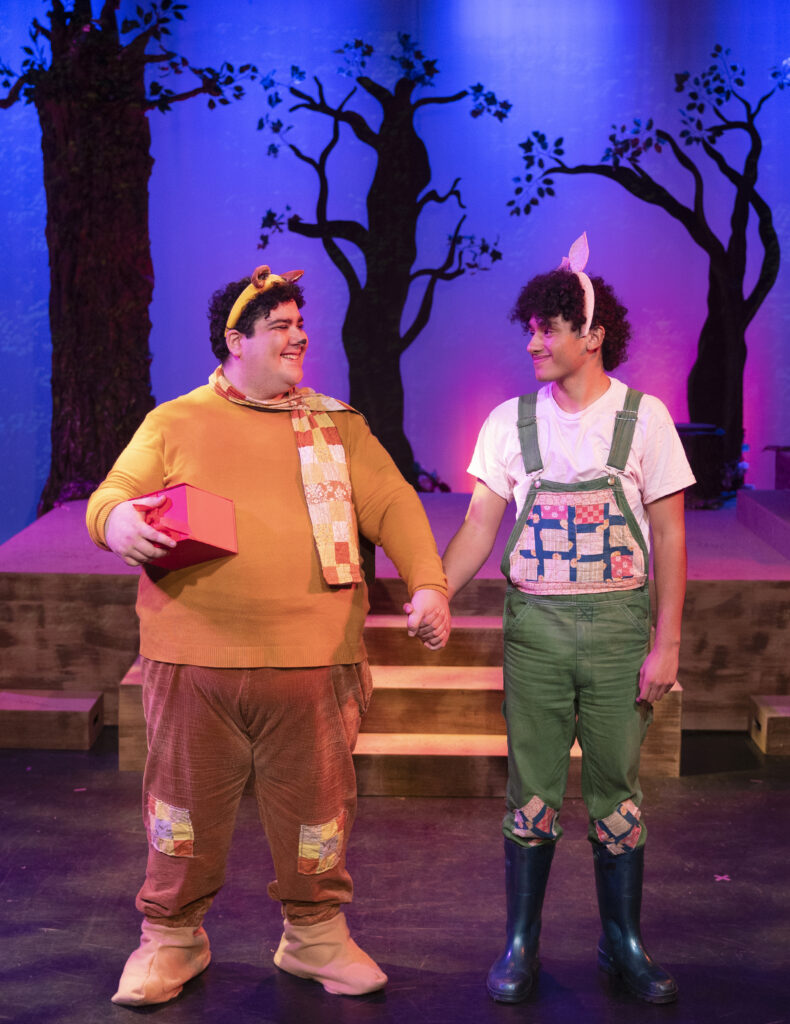
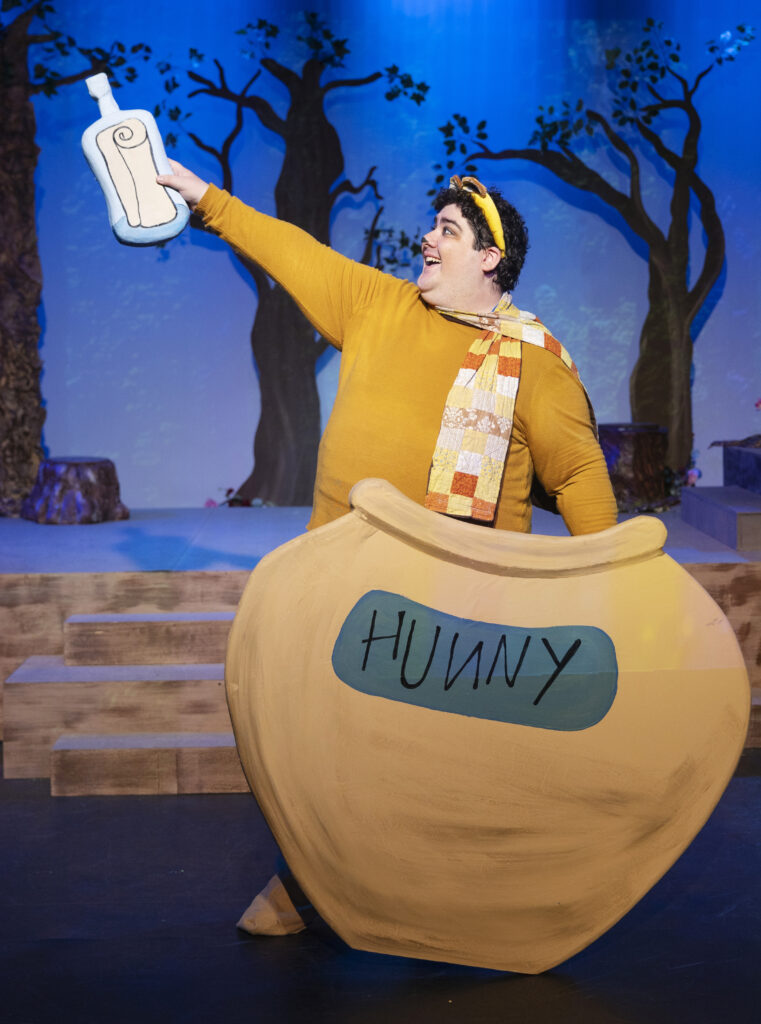
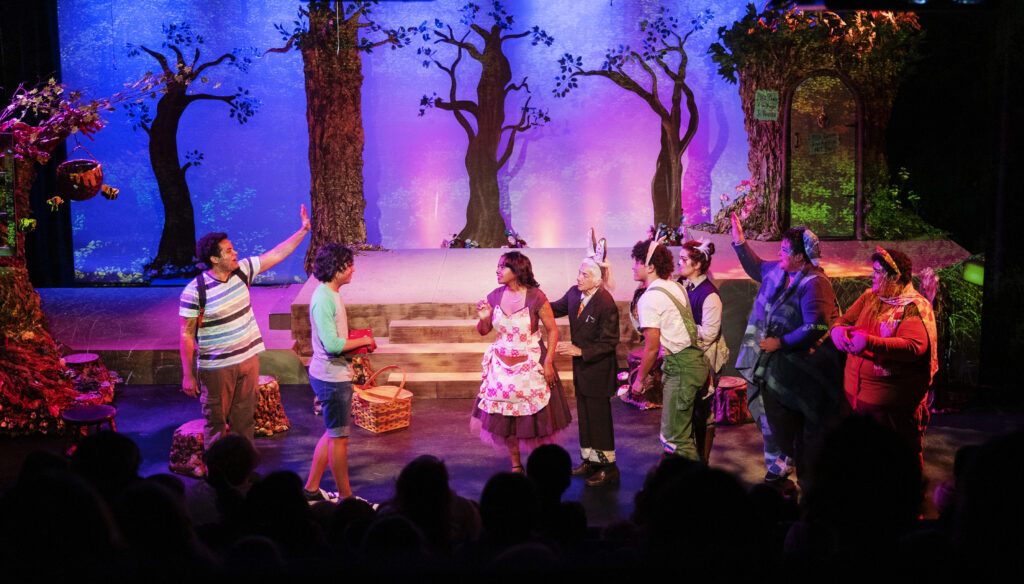
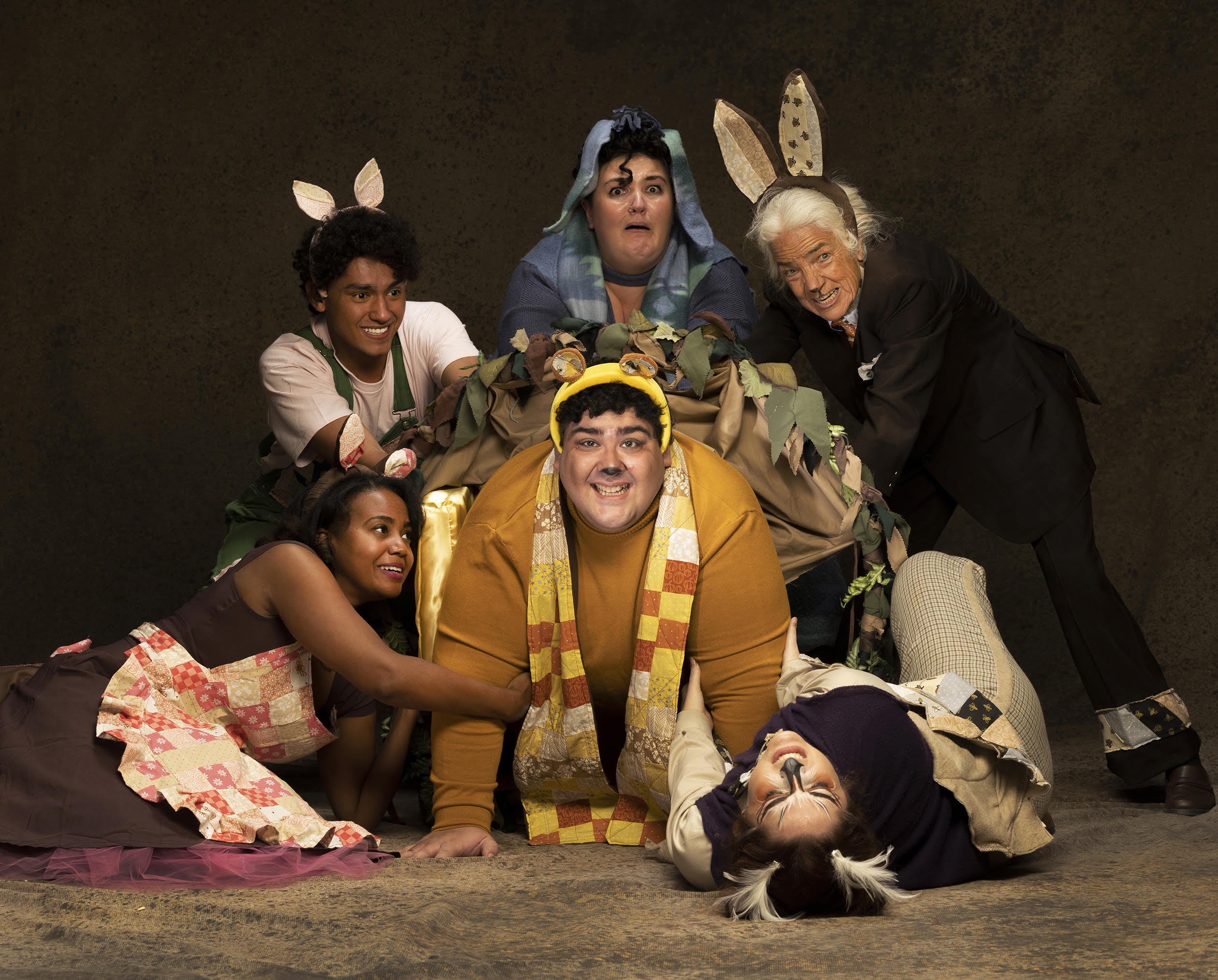
PRR Assistant Director, Erika Brittain
Want more content about our favorite “silly old bear”? Check out our blog on 10 of Our Favorite Moments from Winnie-the-Pooh!